This post may contain affiliate links. Please read our disclosure policy.
This foolproof Vodka Pie Crust recipe is made with all-butter, so it is flakey and flavorful! Precise water measurements take the guesswork out of making perfect pie crust. Use this easy homemade pie crust for any pie!
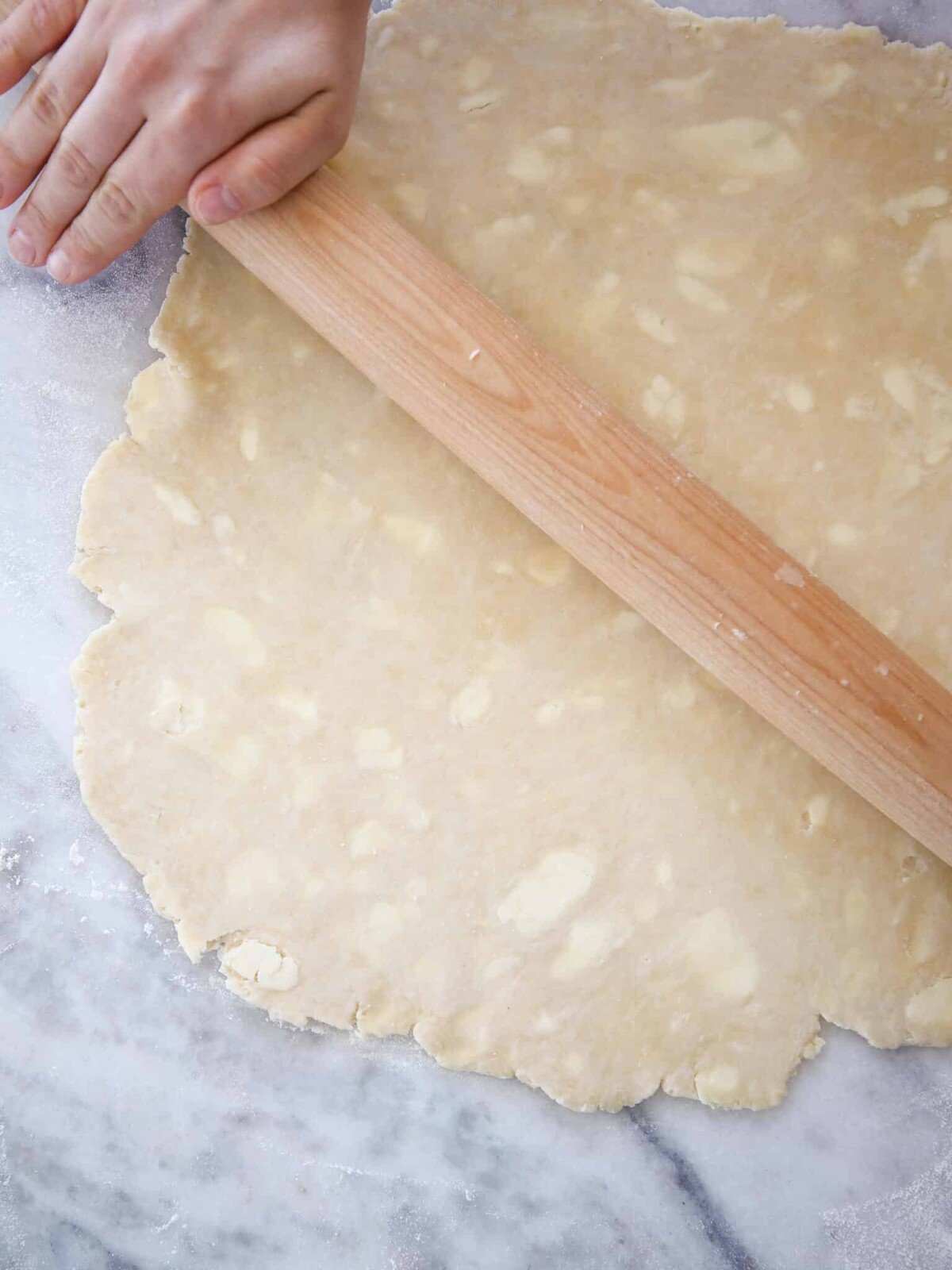
I’ll let you in on a little secret. This is the exact vodka pie crust recipe that I use for my pastry business. The exact same one! I have made this recipe by hand for a double crust pie, in a food processor, and in both a 4 quart and an 80 quart stand mixer. My team and I have made thousands of pies with this recipe like this sweet potato pie, banana cream pie, and, of course, this easy pumpkin pie.
I am giving you all my professional tips to practically guarantee that you get the best pie crust of your life! It makes a flakey crust just like my all-butter pie crust recipe, but it takes all the guesswork out of the water measurements. That way your next classic pecan pie will be the one that everyone talks about for years to come.
Table of Contents
Why This is the Best Vodka Pie Crust Recipe
- Precise measurements to eliminate guesswork. No more hoping that you’ve added just the right amount of water. I include precise measurements for both the vodka and the cold water, so you can stop stressing and start baking!
- Professionally tested and perfected recipe. As a professional pastry chef and bakery owner, I can assure you that this recipe will make perfect pie crust whether you are making a single batch by hand or a 60 crust batch in a commercial stand mixer.
- Flakey, buttery pastry without the stress. Yes, you can make perfect all-butter pie crust! This recipe makes a pastry that is buttery, flakey and tastes decadent. It will allow the filling flavors to shine while adding texture and a little richness.
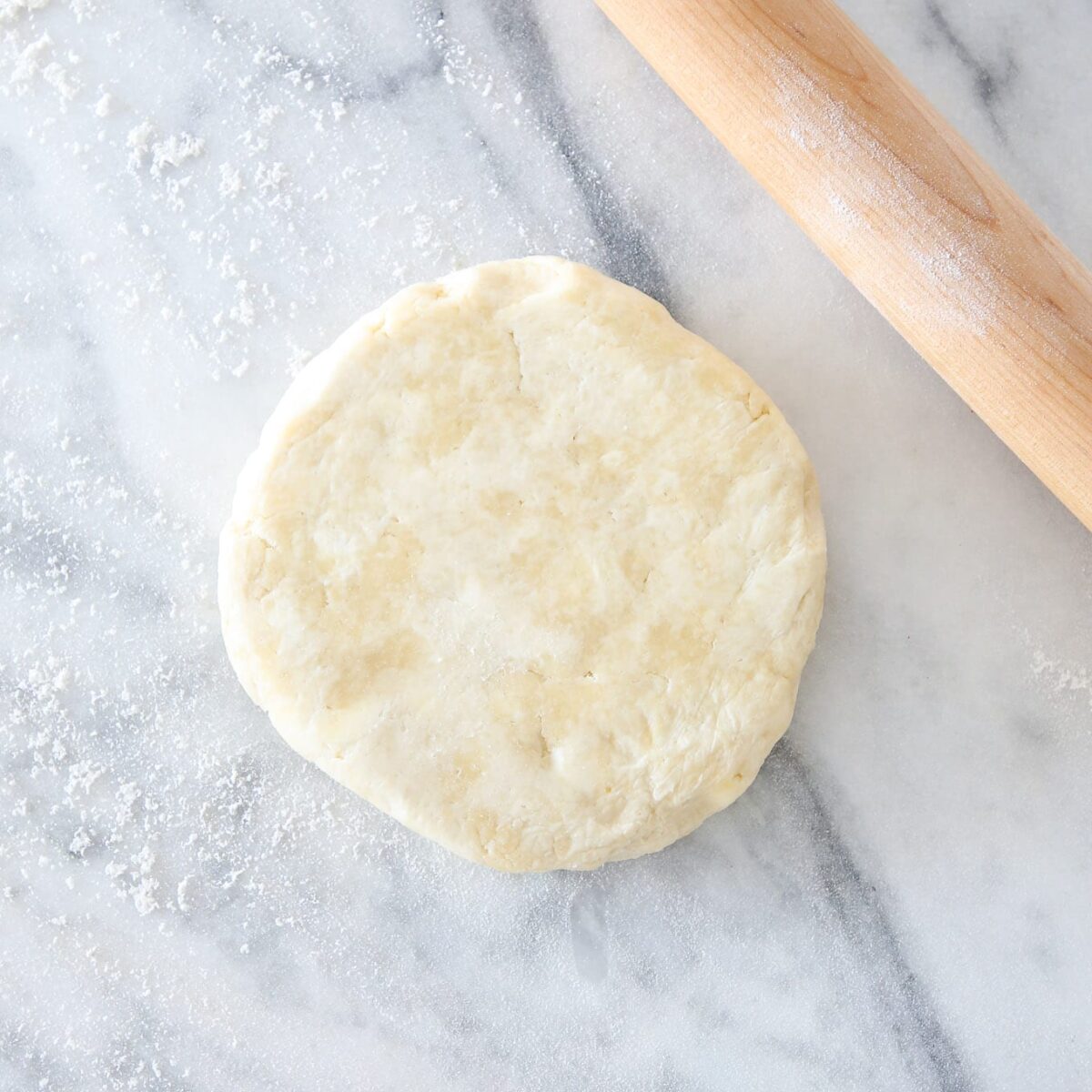
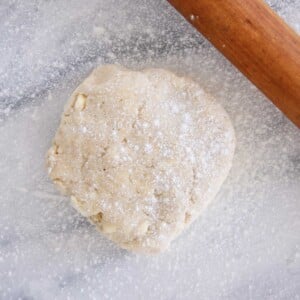
Professional Tips for Making Vodka Pie Crust
- Keep the dough cold. This is the theme that runs through the whole process from the moment you scale your ingredients to the moment when you put the pie in the oven. Your butter should absolutely be cold (not frozen), your water should be ice cold and your vodka should be frozen. This is to help control the gluten formation.
- Measure by weight for the most consistent results. The different methods of measuring flour into a dry measuring cup vary by ½ cup. A HALF a CUP! Think of all that extra gluten in there and how you don’t have any additional butter to coat the strands! Think of how tough and elastic that pie crust will be. So sad.
- Chill between each step. I know it is tempting to rush through all the steps, but chilling the dough allows the gluten to relax and resolidifies the butter. This will make for a tender, flaky pastry rather than a tough pastry. Resolidifying the butter will allow it to melt and release steam in the oven. Those are your flaky layers like in classic puff pastry!
Ingredients Needed
- All-purpose flour: I use all-purpose flour for pie crusts because it is the one I always have on hand. Pastry flour has a slightly lower gluten content, and thus, produces a slightly more tender and delicate pie crust. I have found that the type of flour used is less important than how the dough is handled! Just don’t use bread flour, please and thank you.
- Kosher Salt: I use kosher salt because it is less salty per teaspoon than table salt. Salt is critical in pie crust because it inhibits gluten formation and it adds flavor.
- Sugar: A little bit of granulated sugar in pie crust enhances the flavor, adds a bit of caramelization and inhibits gluten formation.
- Unsalted Butter: I use unsalted butter with 40% milkfat. Other butters can be used to similar effect. Just know that I pushed the amount of butter in this recipe to the edge. That means that you can over-cut-in the butter. When that happens the dough will begin to come together prematurely and will hold less water and vodka. This will make a very sticky dough that will need a lot of bench flour to roll out. That will make the dough tough and taste dry.
- Vodka: I use the actual least expensive vodka possible with this dough, because you cannot taste it. I have tested all levels of vodka in this recipe and it does not make a difference, so reach for the bottom shelf, pop it in the freezer and get baking!
- Ice Water: I keep my ice water in the refrigerator up until the moment I add it to the dough. Simply pull out any un-melted cubes, measure and mix! Cold water inhibits gluten formation and also keeps the butter cold, which will result in a flakier crust.
Variations & Substitutions
- Use pastry flour instead. If you have it on hand, you can substitute pastry flour for the all-purpose flour. Cake flour does not have enough gluten to create flakey layers in pie crust and bread flour has too much gluten so even the lightest touch would make a tough crust.
- Flavor the crust. Flavor the crust with lemon or orange zest for an easy variation. You can also add cinnamon, apple pie spice, or pumpkin spice for a spiced crust. Use a light hand because spices will become more powerful when hydrated.
- Use another alcohol you have on hand. You can use any 80 proof alcohol in place of the vodka in this recipe.
- Make it alcohol-free. For a completely non-alcoholic option, you can also substitute white vinegar for the vodka. Vinegar also hydrates without activating the gluten and, because it is distilled like alcohol, it also evaporates at a lower temperature than water.
What Can You Make with this Pie Crust
This vodka pie crust is perfect for sweet and savory pies and tarts. Use it as the crust for a savory carrot butternut squash tart or an easy apple pie. It is also delicious as a cobbler or pot pie topping. Use it in place of the shortening crust in this peach cobbler or the whole wheat pastry in this whole-wheat chicken pot pie! See all our pies and tart recipes for more ideas!
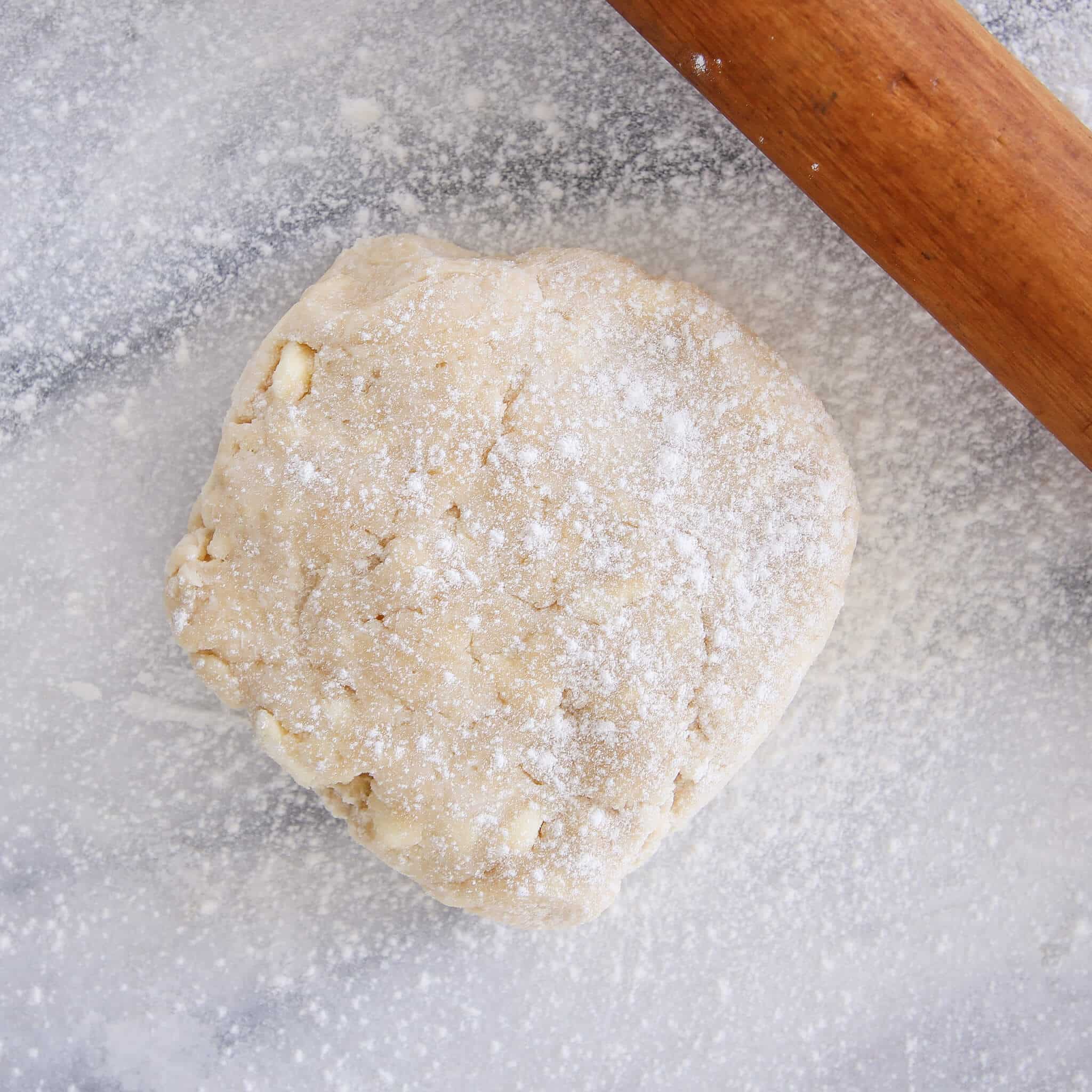
How to Make Vodka Pie Crust
In the recipe I will show you how to make this vodka pie crust using a stand mixer, but you can also make it using a food processor as I did in this YouTube tutorial for making pie crust with a food processor or by hand following my YouTube tutorial on making a pie crust using a pastry blender! Further details and measurements can be found in the recipe card below.
Make the pie dough:
Step 1: In the bowl of a stand mixer fitted with the paddle attachment, combine the flour, salt, sugar and cubed butter. On low speed, cut the butter into the flour until you have some larger pieces but most of the butter has worked into the flour. You will notice that the flour will change color and be slightly darker.
You can over-cut-in the butter in this recipe because there is a high ratio of butter to flour. When that happens the dough will begin to come together prematurely and will hold less water and vodka. If that happens to you, stop mixing immediately. Add all the vodka and then add the water by hand.
Step 2: Stop the mixer and pour the vodka over the top of the crust. Turn the mixer back on low and slowly pour the water over the crust. Mix on low until the flour has hydrated but a cohesive dough has not yet formed.
You will see shards of dough and then some unincorporated flour. This is the “shaggy” dough stage. Perfect.
Step 3: Turn out onto a countertop and press gently until a dough forms. It will be a little wet, but that is ok! Divide the dough in half. Press out into 1 ½ inch disks and wrap in plastic wrap.
Step 4: Refrigerate until cold, at least 2 hours and up to 3 days. Alternatively you can freeze it for up to 2 months. Thaw it in the refrigerator before using.
Roll out pie dough:
Step 5: Lightly flour a smooth work surface with flour. Place the dough on the floured surface and lightly flour the top of the dough and a rolling pin.
I prefer either a French rolling pin or a straight wooden rolling pin because you can control the pressure better than one with handles.
Step 6: Working quickly and efficiently with firm pressure, roll out the dough starting from the center, pressing away from you and then rolling back towards you. Add more flour as needed under or over the dough, rotate it a quarter turn and repeat. Gently working the dough to 1/8th inch thick or slightly thinner.
Step 7: Place the dough on a baking sheet and refrigerate for 30 minutes.
You can also refrigerate first and then wrap and freeze between sheets of parchment paper for longer storage at this stage!
Step 8: You are now ready to line a pie tin or tart mold of your choice!
Chef Lindsey’s Recipe Tip
I have made and supervised large commercial batches of this recipe, which means that I have seen every type of mistake happen or had to troubleshoot what had potentially happened based on the resulting dough. Just know that there is almost nothing you can’t come back from. The end result will be effected to varying degrees, but the pie crust will still be delicious. Work with a light hand and keep it cold, and you’ll be fine!
Frequently Asked Questions
Store prepared, wrapped dough in the refrigerator for up to 3 days or in the freezer for up to 2 months. The dough can also be rolled out, refrigerated and then frozen between parchment paper for frozen homemade dough that is as convenient as store bought.
Alternatively you can blind bake or par bake the crust, cool, wrap and freeze the baked shells for up to 3 months.
Vodka adds moisture without activating the gluten molecules. It helps the pie crust come together easier with less manipulation and evaporates while baking, which results in a flakier, more tender pie crust. Some say that since vodka evaporates at a lower temperature than water, it will make a flakier crust, but when my all-butter pie crust recipe is made properly, it produces a similarly flaky pie crust.
You can use any 80 proof alcohol in place of the vodka in this recipe. For a completely non-alcoholic option, you can also substitute white vinegar for the vodka. You can also make my all-butter pie crust recipe instead or a Crisco pie crust, which both only use water.
While most of the alcohol will bake out of a pie crust made with vodka or another alcohol, it does not completely evaporate. There are still trace amounts of alcohol left in the crust after baking.
If you tried this recipe and loved it please leave a 🌟 star rating and let me know how it goes in the comments below. I love hearing from you; your comments make my day!
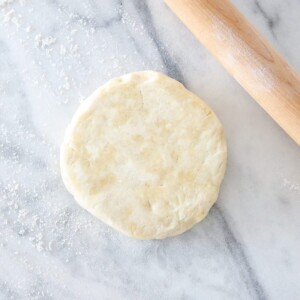
Vodka Pie Crust
Ingredients
- 2 ½ cups all-purpose flour
- 1 teaspoon kosher salt
- 2 tablespoons granulated sugar
- 1 cup unsalted butter cubed
- ¼ cup vodka frozen
- ¼ cup ice water
Instructions
Make the pie dough:
- In the bowl of a stand mixer fitted with the paddle attachment, combine the flour, salt, sugar and butter. On low speed cut the butter into the flour until you have some larger pieces but most of the butter has worked into the flour. You will notice that the flour will change color and be slightly darker.
- Stop the mixer and pour the vodka over the top of the crust. Turn the mixer back on low and slowly pour the water over the crust. Mix on low until the flour has hydrated but a cohesive dough has not yet formed.
- You will see shards of dough and then some unincorporated flour. This is the “shaggy” dough stage. Perfect.
- Turn out onto a countertop and press gently until a dough forms. It will be a little wet, but that is ok! Divide the dough in half. Press out into disks and wrap in plastic wrap.
- Refrigerate until cold, at least 2 hours and up to 3 days. Alternatively you can freeze it for up to 2 months. Thaw it in the refrigerator before using. Make sure to keep it cold!
Roll out the pie dough:
- Lightly flour a smooth work surface with flour. Place the dough on the floured surface and lightly flour the top of the dough and a rolling pin.
- Working quickly and efficiently with firm pressure, roll out the dough starting from the center, pressing away from you and then rolling back towards you. Add more flour as needed under or over the dough, rotate it a quarter turn and repeat. Gently working the dough to 1/8th inch thick or slightly thinner.
- Place the dough on a baking sheet and refrigerate for 30 minutes. You can also refrigerate first and then wrap and freeze between sheets of parchment paper for longer storage at this stage!
- You are now ready to line a pie tin or tart mold of your choice!
Video
Notes
Nutrition
Before You Go
I hope you enjoyed this professional chef tested recipe. Check out our other delicious, chef-developed pie crust recipes, or use that pie dough to make one of our delicious pie recipes!
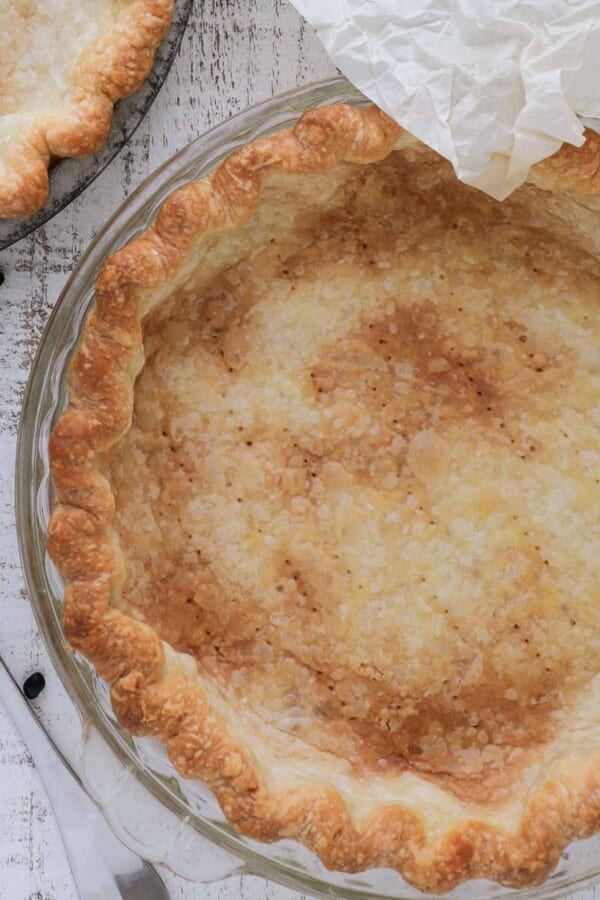
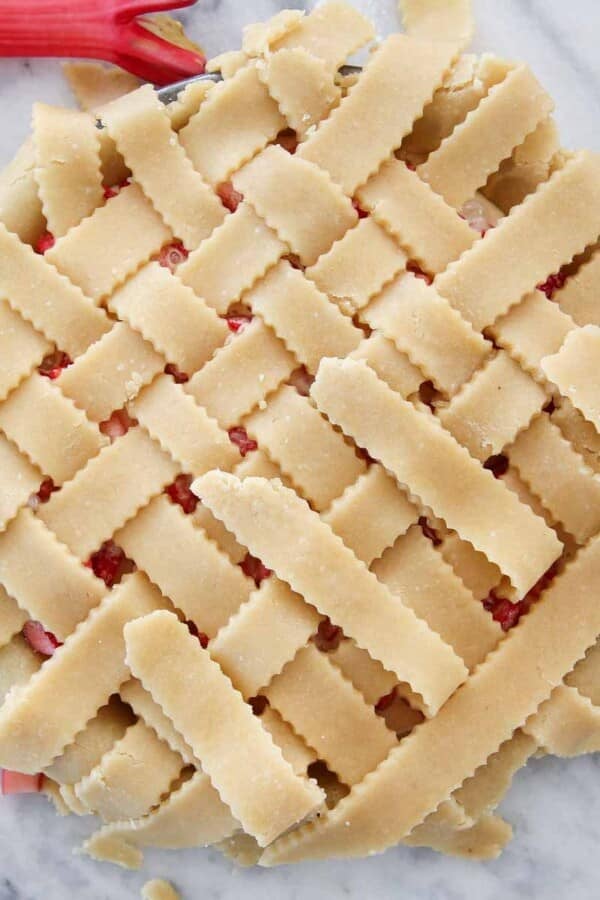

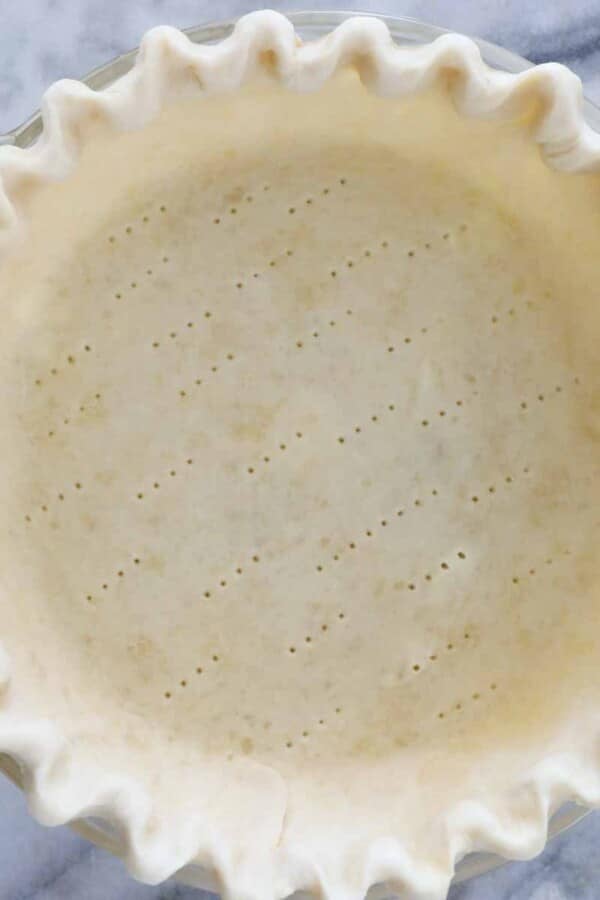








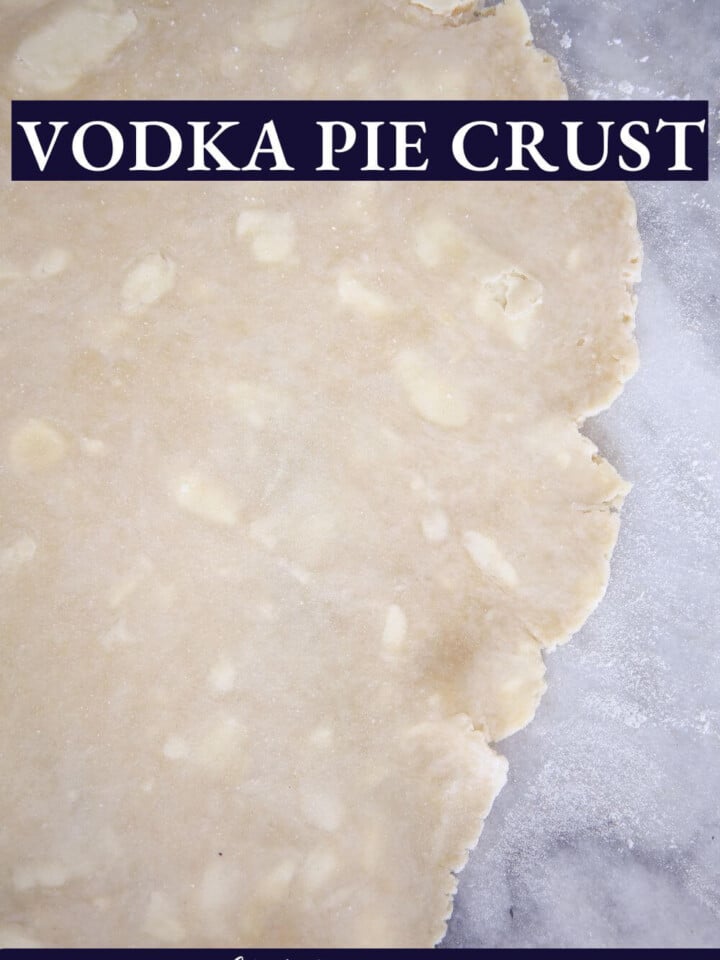
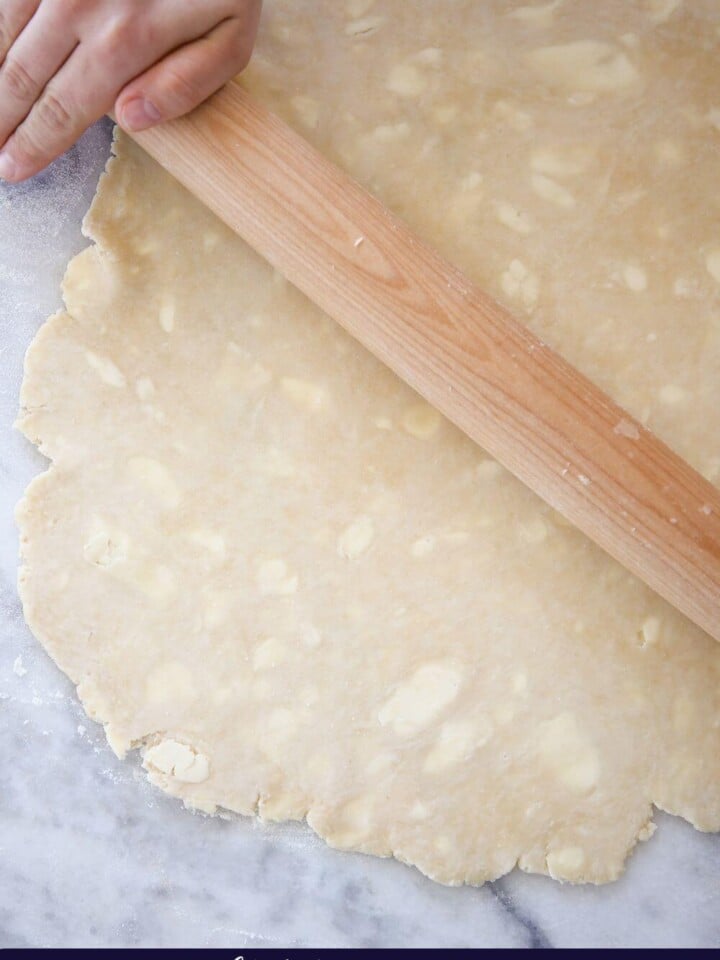
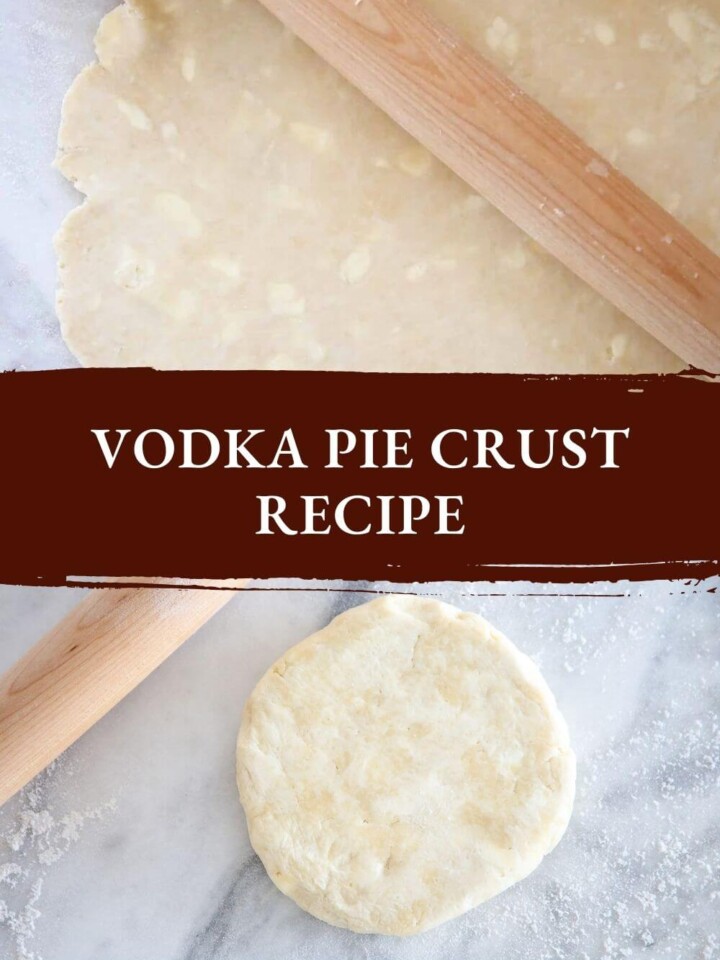
My vodka is only 40 proof, can I still use it?
If your vodka is only 40 proof, it has a lot more water than alcohol, so it won’t behave the same way as 80 proof in this recipe — it would hydrate the flour more like regular water, which can make the crust tougher instead of lighter. You could substitute the vodka with white vinegar instead! Happy baking!
You added half a cup of Vodka and half a cup of water in your demonstration. However, the recipe calls for 1/2C for a single serving. Since you were preparing a double-serving, your dough should have come out dry and crumbly, not moist like you indicated.
Hi Jason, in my video is use 1/2 cup vodka and 1/2 cup water for a double batch. So that math works out to the 1/4 cup vodka and 1/4 cup ice water for a single batch, yes! Happy baking!
i weighed and measured carefully and did not end up with a wet or shaggy dough. Chilling now but dough seems crumbly and will be hard to roll out. too late now but what should i have done? add more vodka or more water?
Oh sadness. Most likely it is a volume measurement issue – probably too much flour. This is the recipe I used in my bakery and would make it in 80 quart batches (you don’t even want to know how much butter that is!) and never had to add more water. In your case, you should have added a bit more water. Depending on how close the dough was, I would wet my hands as I worked it into a cylinder. You can also spot add water with your finger if there are just a few dry spots. The water will further hydrate in the fridge, so don’t stress too much. ~Chef Lindsey
Hello! I want to try this dough recipe for a (roughly) 10” galette. Would you recommend using the entire chunk of dough this creates or would that yield too thick of a dough? I would roll my dough to 14”, fill it with 2-2.5 medium apples, then fold and pleat. I know you have other galettes on your blog but they different in their bases so any insight you can offer would be great!
Hi Kathleen! For a 10″ galette, you could go for half of this dough recipe. This recipe makes enough for 2 single-crust pies, so if you divide it in half that’d be perfect for your galette. Happy baking!
You note the importance of weighing the ingredients but there are no weights given.
Hey! There is a button near the top of the recipe card where you can change the measurements to metric. I try to put my first measurement in volume because that is what the majority of American’s use!
Can I use all lard in place of butter?
Hi Russ! You can use lard instead of butter, but beware it’ll yield a denser crust, and be a bit more crumbly. You could do a mixture to capture some of butter’s benefits! Be sure to keep the lard chilled, and happy baking!